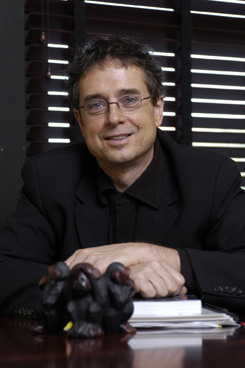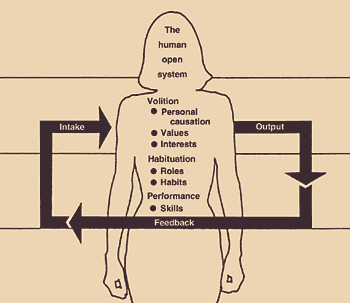My introduction to systems thinking – a map by Kielhofner
OT Community Mourns the Loss of Dr. Gary Kielhofner
Yolanda writes about the loss of a inspirational man, Gary Kielhofner …
“Gary Kielhofner was a remarkable man, a visionary, a passionate scholar. As a beginning scholar, over 30 years ago, he had a dream of advancing the field of occupational therapy in order to assist individuals with chronic health conditions and disability live fulfilling and satisfying lives. His dream became a reality when he crafted the Model of Human Occupation, also known as MOHO. Gary’s work has inspired and impacted the lives of thousands and thousands of therapists, students, clients and colleagues. He made history, broke ground, and shaped the future of the profession. He shared a unique sense of pride when mentoring students and colleagues, bringing out the best in them. As a visionary, he thought of a world of peace, in which social justice reigns and individuals’ occupational performance needs are met.”
Gary’s ‘maps’ and ‘models’ of human occupation influenced a generation of practitioners in Occupational Therapy and fields beyond. As a 17 year old entering the Occupational Therapy course at LaTrobe University in 1998, the name ‘Kielhofner’ was everywhere and I struggled to understand his “Model of Human Occupation”.
The basis of this model has three elements:- Volition, Habituation & Performance Capacity.
Volition refers to the process by which persons are motivated toward and choose what they do. Habituation analyses the person’s habits and routines. Performance Capacity analyses the persons mental, physical & sensory capabilities
“Volition, habituation, performance capacity and environmental conditions always resonate together, creating conditions out of which our thoughts, feelings and behaviour emerge” (Kielhofner 2004).
BIG maps and models of our world
During the early years of Occupational Therapy, I struggled with Kielhofner’s model. Now I realise that Occupational Therapy nurtured our growth as ‘systems-thinkers’ and to see the world (and the people we worked with) as an ecological system – where each part is connected. I have no doubt that the struggle we experienced early on in our study, has shaped us to see the world differently.
It wasn’t until 1999 that I started to see how much the Model of Human Occupation shaped my worldview. At about this time, I became a passionate about sustainability and permaculture. The ecological models and maps I began to read seemed so familiar and easy to grasp. My ability to apply them and ask relevant questions surprised me at the time.
As I entered the world of facilitation and community engagement in 2004, my struggles with everything ‘Kielhofner’ in the 80’s, again prepared me well.
My friend and mentor Viv McWaters once asked me, “Why do OT’s make such great facilitators?”
My answer, now, is because we were challenged to learn and apply models (and maps) of the world like Gary Kielhofner’s Model of Human Occupation.
Gary … you will be missed.
Geoff

